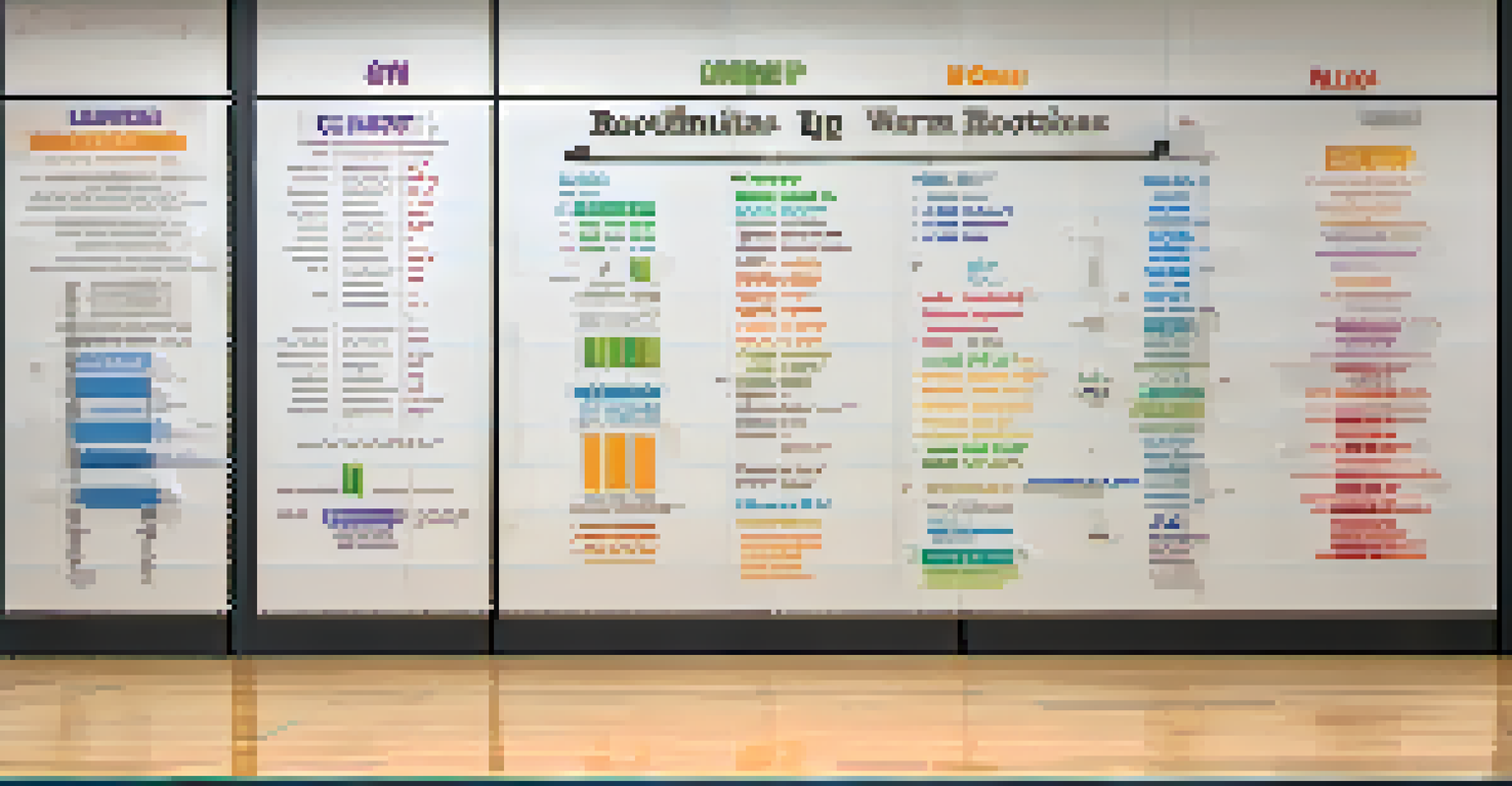Static vs Dynamic Warm-ups: What’s Best for Bodybuilders?

Understanding Warm-ups: The Key to Injury Prevention
Warm-ups are an essential part of any workout routine, especially for bodybuilders. They prepare your muscles and joints for the intensity of weightlifting, helping to prevent injuries. Think of warm-ups as the first step in a race; without proper preparation, you risk tripping over your own feet.
An ounce of prevention is worth a pound of cure.
There are two main types of warm-ups: static and dynamic. Static warm-ups involve holding stretches to improve flexibility, while dynamic warm-ups involve movement to increase heart rate and blood flow. Each has its own benefits, but understanding which is best for your specific needs is crucial.
For bodybuilders, choosing the right warm-up can enhance performance and lead to better results. By knowing the differences between static and dynamic warm-ups, you can tailor your routine to fit your goals and ensure a safe, effective workout.
What Are Static Warm-ups and How Do They Work?
Static warm-ups focus on holding stretches for a period, usually around 15-30 seconds. These stretches target specific muscle groups to improve flexibility and range of motion. Imagine your muscles as elastic bands; the more you stretch them, the more flexible they become.

While static stretches can be beneficial, they are best done after workouts or on off days. Research indicates that static stretching before heavy lifting may temporarily weaken muscles, which can be counterproductive. This is why timing is essential when incorporating static warm-ups into your routine.
Warm-ups Prevent Injuries
Incorporating warm-ups into your workout routine prepares your muscles and joints, significantly reducing the risk of injuries.
For bodybuilders, the goal is to maximize strength and hypertrophy. Incorporating static stretches post-workout can aid in recovery and prevent muscle tightness, allowing for better performance in future sessions.
The Benefits of Dynamic Warm-ups for Bodybuilders
Dynamic warm-ups involve active movements that mimic the exercises you’ll be performing. This type of warm-up raises your heart rate, increases blood flow to muscles, and prepares your body for intense activity. Picture yourself doing leg swings and arm circles; this gets your body ready to lift weights effectively.
The only bad workout is the one that didn’t happen.
Research shows that dynamic warm-ups can enhance performance by improving strength, power, and overall workout effectiveness. Bodybuilders often find that incorporating movements like lunges, high knees, and shoulder rotations primes their muscles for heavier lifts.
Additionally, dynamic warm-ups can help improve coordination and balance, making them an excellent choice for complex compound movements. By engaging in dynamic stretches, you not only prepare your muscles but also enhance your overall workout experience.
Static vs Dynamic: Which is More Effective for Bodybuilders?
When deciding between static and dynamic warm-ups, it’s essential to consider your workout goals. For bodybuilders focused on maximal strength, dynamic warm-ups are generally more effective. They help activate muscles and elevate heart rates, leading to improved performance during heavy lifts.
Conversely, if your goal includes flexibility or muscle recovery, static stretches have their place. They can lead to increased flexibility over time, which is crucial for maintaining proper form and preventing injuries. It’s all about balance and knowing when to use each type.
Dynamic vs Static Warm-ups
Dynamic warm-ups are generally more effective for bodybuilders focused on strength, while static stretches are beneficial for flexibility and recovery.
Ultimately, many bodybuilders find that a combination of both warm-up types works best. Starting with dynamic exercises to prime the body and following up with static stretches can create a comprehensive warm-up routine.
Crafting Your Perfect Warm-up Routine
Creating an effective warm-up routine involves understanding your body and workout demands. Start with a few minutes of light cardio to get your heart rate up, followed by dynamic stretches targeting the main muscle groups you'll be using. This prepares your body for the intensity of the workout ahead.
After your workout, consider adding static stretches to your routine. Focus on areas that feel tight or fatigued, holding each stretch for around 15-30 seconds. This approach not only aids in recovery but also contributes to long-term flexibility gains.
Remember, consistency is key. By sticking to a warm-up routine that incorporates both dynamic and static elements, you’ll be setting yourself up for success in the gym while minimizing the risk of injury.
Common Mistakes to Avoid During Warm-ups
One common mistake many bodybuilders make is skipping warm-ups altogether. This can lead to injuries and hinder performance. Treat your warm-up like a pre-game ritual; it gets your body in the right state for action and prepares you mentally as well.
Another error is spending too much time on static stretching before workouts. As mentioned earlier, static stretches can temporarily weaken your muscles. Instead, keep your pre-workout routine focused on dynamic movements to enhance performance.
Craft a Personalized Routine
Developing a warm-up routine that combines both dynamic and static elements tailored to your needs can enhance performance and promote long-term flexibility.
Lastly, not listening to your body can be detrimental. If a particular stretch or movement feels uncomfortable, don’t push through the pain. Adjust your routine to ensure you’re adequately preparing your body for the physical challenges ahead.
Final Thoughts: Finding What Works for You
In the end, the best warm-up routine is one that fits your individual needs and workout style. Both static and dynamic warm-ups have their unique benefits, and finding the right balance is essential for optimal performance. Experiment with different techniques and listen to your body’s feedback.
Consider consulting with a trainer or experienced lifter to refine your warm-up strategy. They can offer insights tailored to your specific training goals, whether that’s building muscle, increasing strength, or enhancing endurance.

Ultimately, investing time in a proper warm-up routine will pay off in your bodybuilding journey. Not only will it help prevent injuries, but it will also improve your overall workout experience, leading to better results over time.